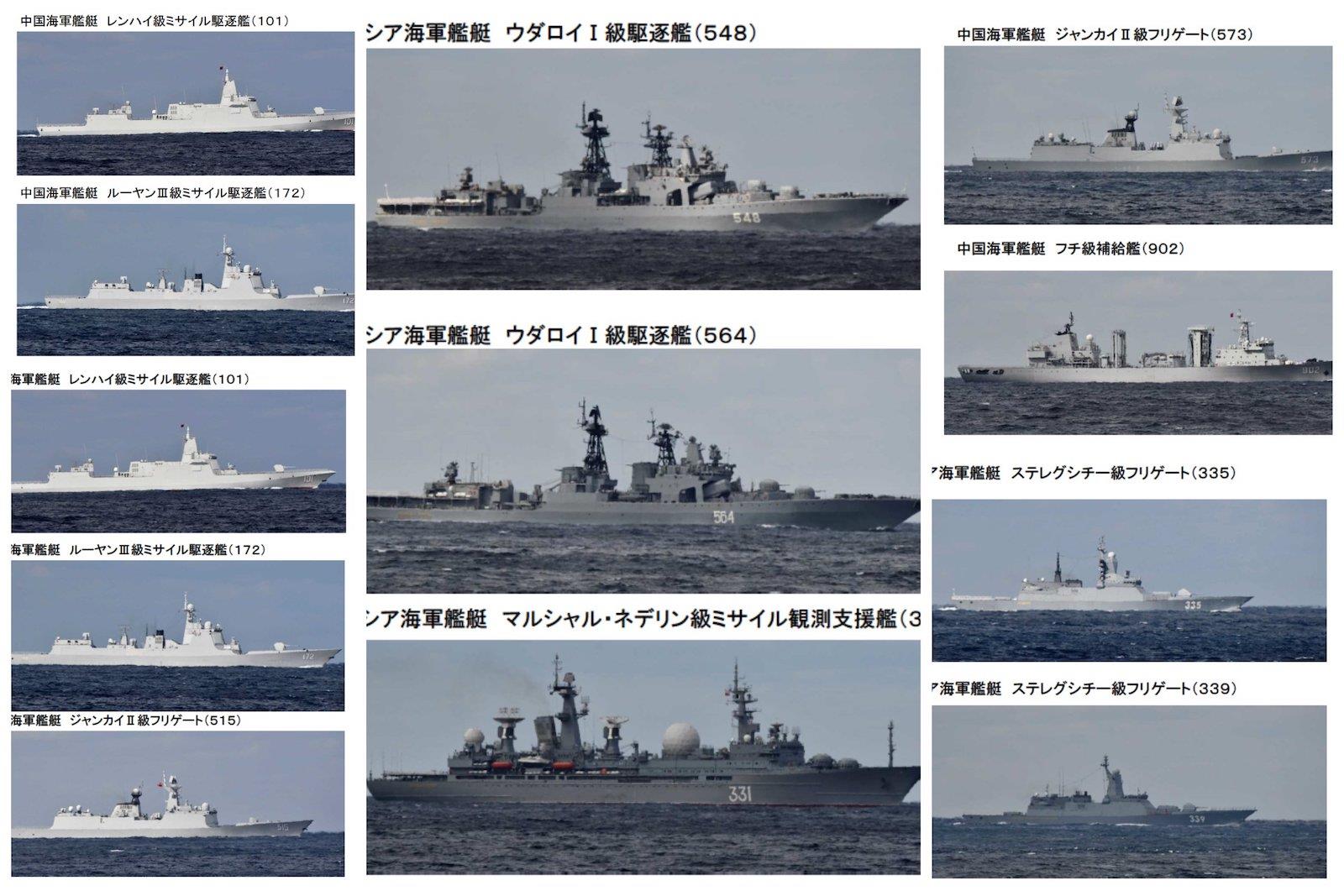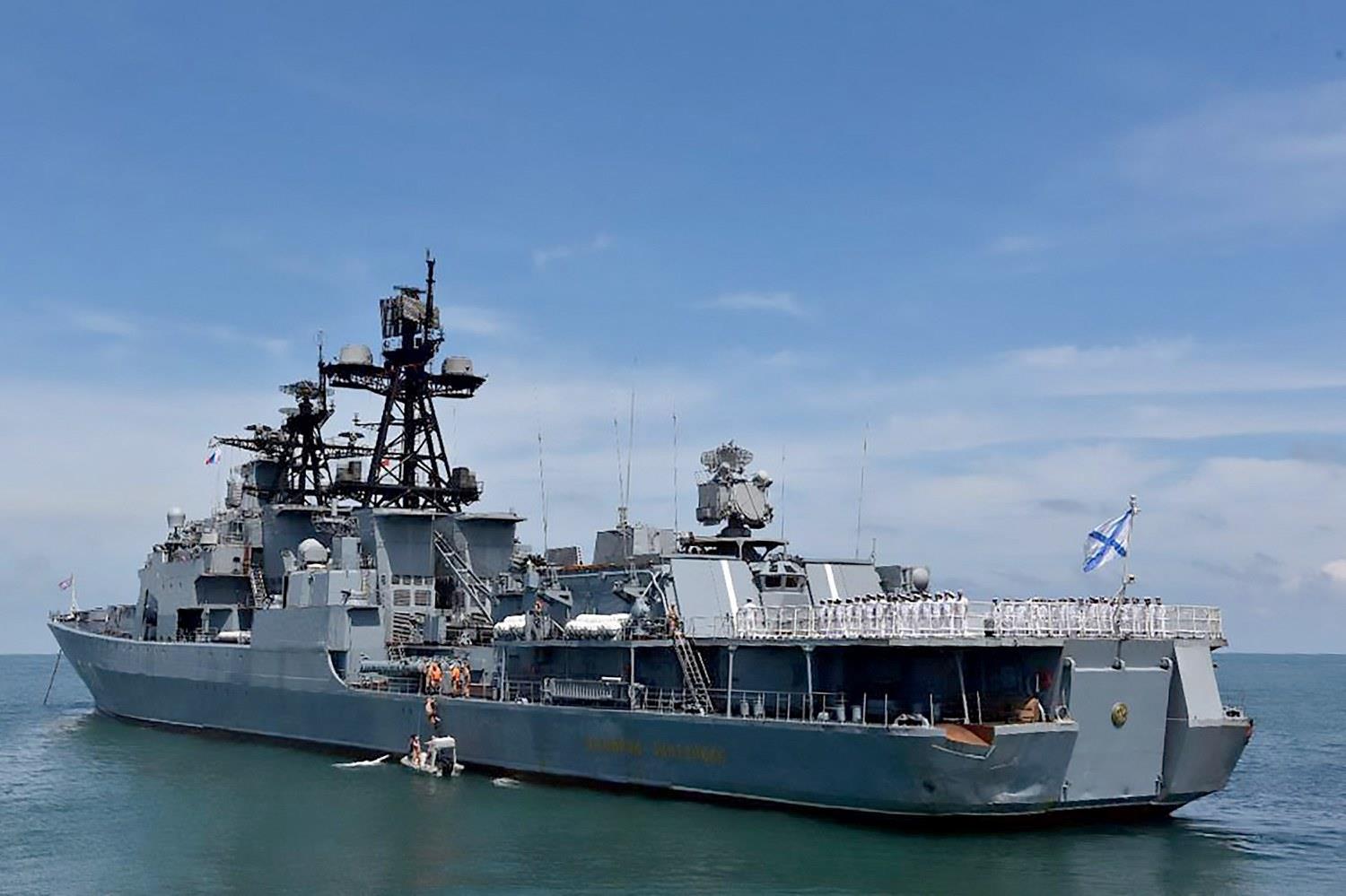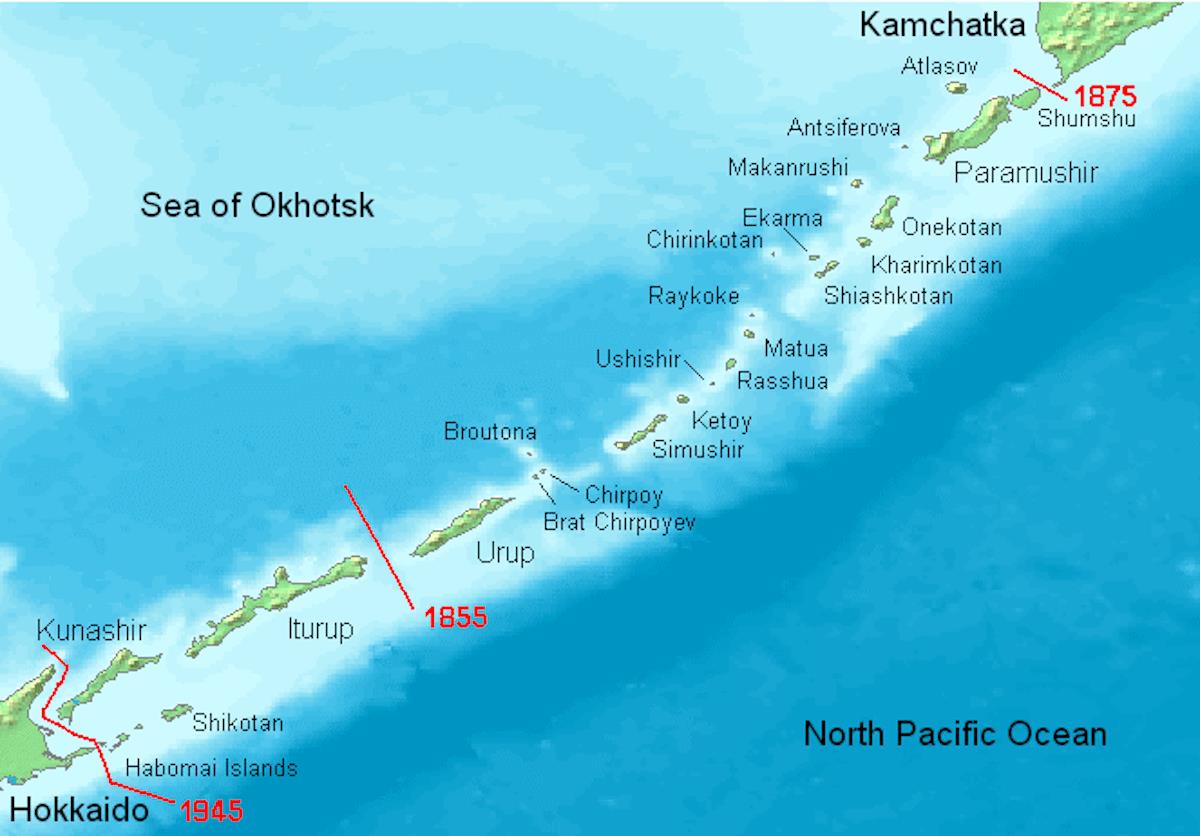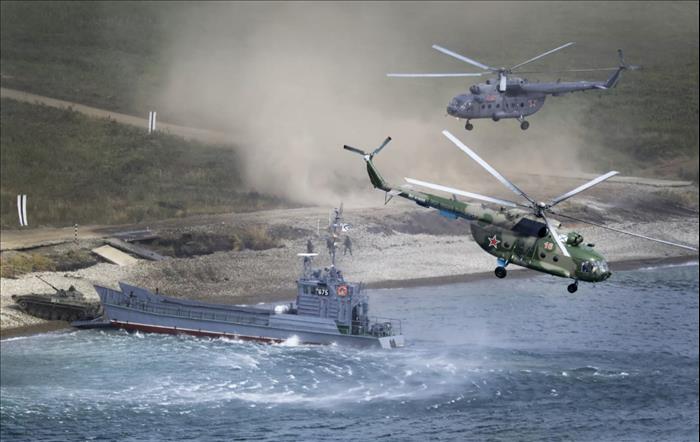
Russia stepping up its Pacific military presence
TOKYO – It has been a busy year-end for Russian military forces in the Pacific, which have made themselves a geopolitical factor that cannot be ignored by the US, Japan and their Pacific allies.
From October 14-17, Russia and China held joint naval exercises in the Sea of Japan.
Then, on October 18, 10 Russian and Chinese vessels sailed through the Tsugaru Strait between Honshu and Hokkaido, down Japan's Pacific coast through the Osumi Strait between the southern tip of Kyushu and the island of Tanegashima where Japan's space launch facilities are situated and into the contested South China Sea.
Japan's Deputy Chief Cabinet Secretary Yoshihiko Isozaki told reporters that the Japanese government was“watching with great interest the activities of Chinese and Russian warships around Japan. We will take nothing for granted in our warning and surveillance activities in the air and sea domains around Japan.”
A week later, speaking at the naval base at the Yokosuka headquarters of the Seventh Fleet on the west side of Tokyo Bay, US Navy Secretary Carlos Del Toro said:
Del Toro also said that freedom of navigation in international waters is“truly a wonderful thing” – but evidently not all freedom of navigation is equally wonderful.

10 Chinese and Russian warships sail through Japanese islands. Photos: US Naval Institute
It should be noted that this incident could only happen because Japan was persuaded to narrow its territorial sea claims in both straits from the usual 12 nautical miles to three nautical miles in the 1970s in order to allow American ships carrying nuclear weapons to pass through without violating the third of Japan's“Three Non-Nuclear Principles” – non-possession, non-production and non-introduction of nuclear weapons.
As a result, the central channels of both straits are classified as international waters.
A spokesman for Japan's Ministry of Defense told the press:“No violation of territorial waters has taken place, and no international rule has been ignored.”
ASEAN – Russia naval exerciseOn October 28, the 4th ASEAN-Russia summit was held via video conference to commemorate the 30th anniversary of the establishment of official relations between ASEAN and the Russian Federation.
According to the joint statement issued after the Summit, the two parties:
Then, on December 1, the first ASEAN-Russia naval exercise started off the coast of Sumatra. Eight ships and four aircraft from Indonesia, Singapore, Malaysia, Thailand, Myanmar, Vietnam, Brunei and Russia participated in three days of drills. The other ASEAN countries sent observers.
The exercise – which included maneuvering, communications, search and rescue and dealing with suspicious vessels – was in support of a joint commitment to“maritime security and safety, freedom of navigation and overflight and unimpeded commerce” affirmed at the Summit.
Russia was represented by the destroyer Admiral Panteleyev (classified as a“large anti-submarine ship”) of Russia's Pacific Fleet. Its commander, Aleksei Bolotnikov, told the press that he hoped the next ASEAN-Russia naval exercise would be held in Vladivostok.

Naval drills signal Russian interest in Southeast Asia, not a strategic sea change. This handout photo taken and released on December 1, 2021, by the Indonesian fleet command Koarmada I, shows the Russian destroyer Admiral Panteleyev off the waters of Belawan during a joint exercise between the Indonesian Navy, the Russian Navy and ASEAN members.
ASEAN has also held naval exercises with China and the US. Obviously, ASEAN hopes to maintain its“centrality.”
Defense of the Kuril IslandsOn December 2, RT reported that the Russian Federation had deployed mobile missile defense systems on the island of Matua. Matua is located in the middle of the Kuril Island Chain, which runs from Kamchatka to Hokkaido. The Kuril Ridge, as it is called in Russian, forms the outer wall of the Sea of Okhotsk.
It is not a hospitable environment. The volcanic Kuril Islands are cold, windy, foggy and wet. The smoking Sarycheva volcano that forms the island of Matua erupts every few years, most recently in January 2021. In the language of the Ainu, the original inhabitants of the Kurils and Hokkaido, Matua means“hell mouth.”
During World War II, the Japanese military built a large base on Matua with an airfield and a garrison of several thousand men. American aircraft bombed it, the US Navy shelled it and a Japanese shore battery sank the American submarine USS Herring after it had sunk several Japanese vessels in nearby waters.
At the end of the war, Truman reportedly asked Stalin if he would transfer control of Matua to the US. When Stalin offered to trade it for an island in the Aleutian chain, that was the end of that.
Japan used the Kurils to control access to the Sea of Okhotsk, as the Russians do today. Russia also has missile batteries and airfields on the islands of Paramushir, off the southern tip of the Kamchatka Peninsula, and Iturup (Etorofu in Japanese) and Kunashir (Kunashiri) near Hokkaido, which are claimed by Japan.

Map: Wikipedia
In the Ainu language, Kunashir means“black island.” Iturup means“big salmon.” The Ainu, of whom there are now very few, do not have much of a voice in the dispute over who is the rightful owner of the islands.
In Japanese, Kunashiri is written phonetically with the characters for“country” and“back” or“behind” – perhaps an unfortunate choice in retrospect. Etorofu is written phonetically with the characters for“choose” and“catch” – as in catch a big salmon?
Encounter near VladivostokJust over a year ago, the commander of the US 7th Fleet issued the following statement:
According to reports of the incident, the John S. McCain had sailed two kilometers into Peter the Great Bay, near the headquarters of the Russian Pacific Fleet and the entrance to the port of Vladivostok.
The following month, Nikkei Asia quoted Professor Artyom Lukin of Russia's Far Eastern Federal University as saying:“If you look at the weapons systems deployed by the Russian Defense Ministry to the Far East in recent years, then you'll notice that these systems are meant to repel a threat from the sea and the air, not a land-based threat from China … The emphasis in military planning in the Far East is aimed at containing the US-Japanese threat.”
There have been other close encounters between American and Russian naval vessels in the Sea of Japan and there will probably be more.
Scott Foster is an analyst with Lightstream Research, Tokyo.

Legal Disclaimer:
MENAFN provides the
information “as is” without warranty of any kind. We do not accept
any responsibility or liability for the accuracy, content, images,
videos, licenses, completeness, legality, or reliability of the information
contained in this article. If you have any complaints or copyright
issues related to this article, kindly contact the provider above.

















Comments
No comment